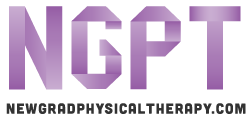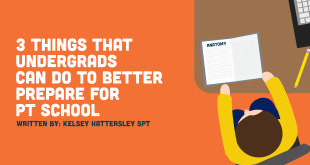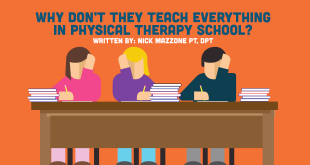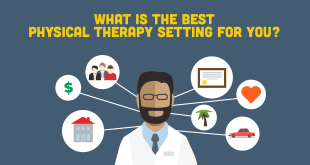Last summer was one of the best – but also the busiest — of my life. I graduated from PT school, started working as a PT and got married. Somehow, in the midst of all that excitement, I also registered for the NPTE exam, studied for, and passed the boards. While everyone’s study journey is a little different, I wanted to share mine with you in the hopes of offering up some suggestions:
- Don’t over study. If you give yourself enough time (8 weeks or so), you shouldn’t need to devote your whole days to studying. I set aside 3-4 hours every day for studying and THAT WAS IT. If you try to spend all day studying, you’ll probably burn out after a week or two. Occasionally, I did an extra hour here or there if I felt like I was running behind, but otherwise I stuck to my schedule.
- Make studying your job. Each weekday morning, I got up with my husband and had him drop me off at the library on his way to work. While I was at the library, I was there to study. Once an hour I walked around and checked my phone, but the whole rest of the morning I had nothing else to do but study. Knowing that by noon I would have the rest of the day off was usually enough to keep me focused even though I can be a bit of a daydreamer. I also kept my laptop at home and my phone in my backpack so that I couldn’t “accidentally” end up on Facebook.
- Have fun. In the afternoons, once my three hours were over, I did not touch my notes. I went to the gym, I organized wedding seating charts, I binge watched Gilmore Girls, and I eventually started working part time, but I never once cracked a study guide. This was also true for the one day per week I took completely off. Knowing that I was not “at work” at the library allowed to me to enjoy the rest of the day guilt-free.
- Know where to focus your time. Orthopedics, neuroscience and cardiopulmonology comprise the vast majority of the test, so that should be where the bulk of your attention goes. It’s important to study everything, but don’t spend hours on the genitourinary system if that comprises less than 10% of the questions. Make an outline at the beginning of your studying period so that you plan in advance how long to spend on each topic. While debates rage on as to which study guide is the best, I found Scorebuilders easier to read, and used O’Sullivans as a supplement.
- Hit the highlights. As I studied, I filled two legal pads with notes. I copied down things I hoped to memorize (like pediatric milestones), wrote out things I had forgotten, and drew pictures of important concepts. While 50 yellow pages may seem like a lot, I was able to review it again and again in a way that you can’t with an 800-page study book. I reread these notes at the end of every week and several times in the lead up to the big day to make sure that the most important details stayed with me. This was my version of cramming since it is impossible to actually cram for the boards.
- Use practice tests wisely. While practice tests are very helpful, it’s important not to go crazy taking them. Each test takes about five hours, and I found that it took me about 10 (!) hours to go over each one. This meant reviewing each question one-by-one and looking into the answers I got wrong. Most books will explain why each possible answer is either right or wrong and I found this to be immensely helpful, but also very time consuming. Overall, I did a test or two from my study guides, but most importantly I did both tests from the PEAT about a week before the exam. Although the PEAT is a little pricey, I’m thankful I shelled out for it. It is written by the same organization as the boards so it’s closer to the boards than any review book can hope to be. It also mimics the same computer format as the boards, so that you’re already familiar with it when you sit for the test.
Now it’s time to learn how to take the test itself with my next article on test-taking tips for the NPTE
 NewGradPhysicalTherapy.com The Largest Online Resource For New Grad Physical Therapists
NewGradPhysicalTherapy.com The Largest Online Resource For New Grad Physical Therapists








How much time did you devote to biomechanics/anatomy such as convex/concave points of individual carpals and tarsals? Also ligaments and capsules of the hand and foot. This was broadly covered in my program and I am seeing a lot of this information for the first time (TherapyEd book).
I didn’t spend a lot of time memorizing whether things were convex/concave. Instead, I just tried to visualize and understand it. I similarly didn’t study a ton extra about the hand/foot. I don’t recall seeing either pop up a ton when studying, and I tried not to blanketly memorize things.
Hi…great tips. Thanks
Did you just study your therapy Ed and score builders alone please?